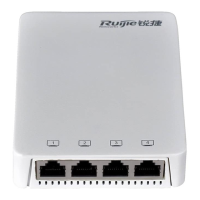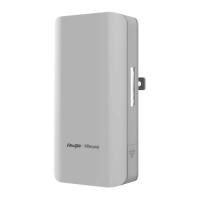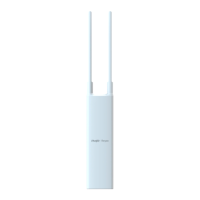Command Reference Network Connectivity Test Tool Commands
Usage
Guide
The ping ipv6 command can be used in the ordinary user mode and the privileged EXEC mode. In the
ordinary mode, only the basic functions of ping ipv6 are available. In the privileged EXEC mode, in addition
to the basic functions, the extension functions of the ping ipv6 are also available. For the ordinary functions
of ping ipv6, five packets of 100Byte in length are sent to the specified IP address within the specified
period (2s by default). If response is received, ‘!’ is displayed. If no response is received, ‘.’ displayed, and
the statistics is displayed at the end. For the extension functions of ping ipv6, the number, quantity and
timeout time of the packets to be sent can be specified, and the statistics is also displayed in the end. To
use the domain name function, configure the domain name server firstly. For the concrete configuration,
refer to the DNS Configuration section.
Configurat
ion
Examples
The example below shows the ordinary ping ipv6.
Ruijie# ping ipv6 2000::1
Sending 5, 100-byte ICMP Echoes to 2000::1, timeout is 2 seconds:
< press Ctrl+C to break >
!!!!!
Success rate is 100 percent (5/5), round-trip min/avg/max = 1/2/10 ms
The example below shows the extension ping ipv6.
Ruijie# ping ipv6 2000::1 length 1500 ntimes 100 timeout 3 data ffff source
192.168.4.10:
Sending 100, 1500-byte ICMP Echoes to 2000::1, timeout is 3 seconds
< press Ctrl+C to break >
!!!!!!!!!!!!!!!!!!!!!!!!!!!!!!!!!!!!!!!!!!!!!!!!!!!!!!!!!!!!!!!!!!!!!!!!!!!!!!
!!!!!!!!!!!!!!!!!!!!!!
Success rate is 100 percent (100/100), round-trip min/avg/max = 2/2/3 ms
Related
Command
s
Command Description
N/A N/A
Platform
Descriptio
n
The command is supported by all ipv6 equipments.
traceroute
Execute the traceroute command to show all gateways passed by the test packets from the source
address to the destination address.
traceroute [ vrf vrf-name | ip ] [ ip-address [ probe number ] [ source source ] [ timeout seconds]
[ ttl minimum maximum ] ]
Parameter
Parameter Description

